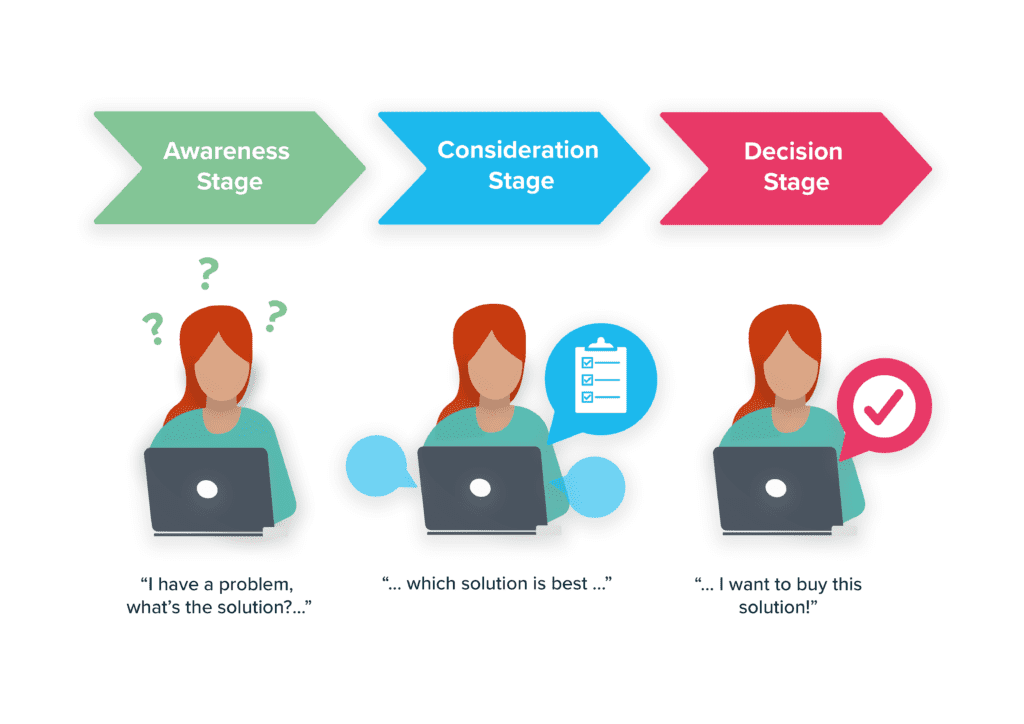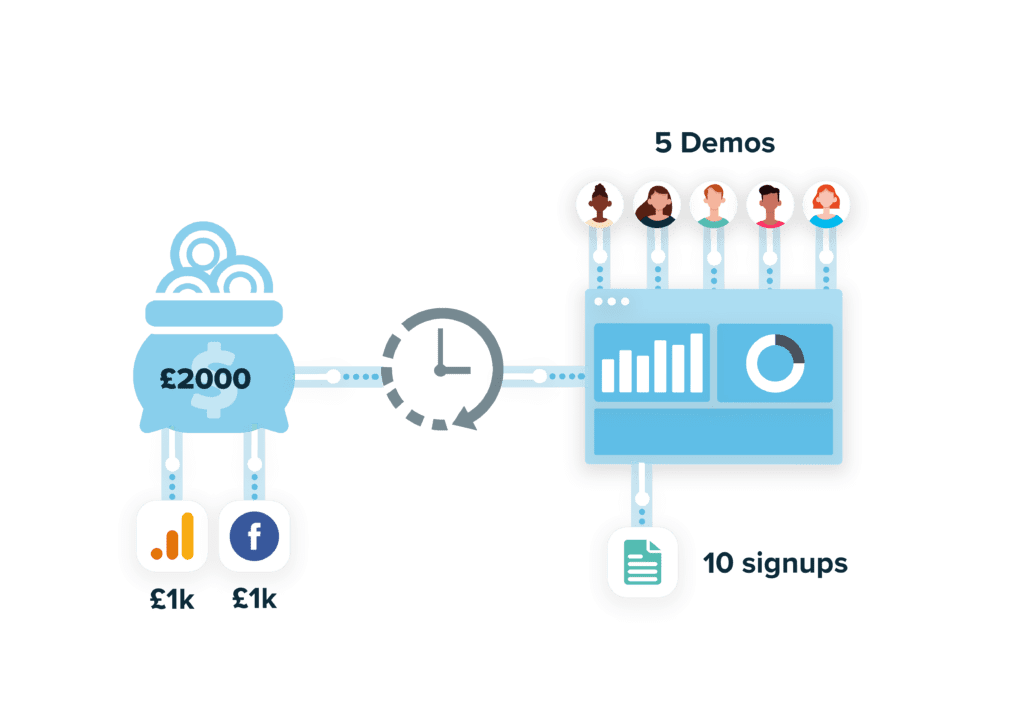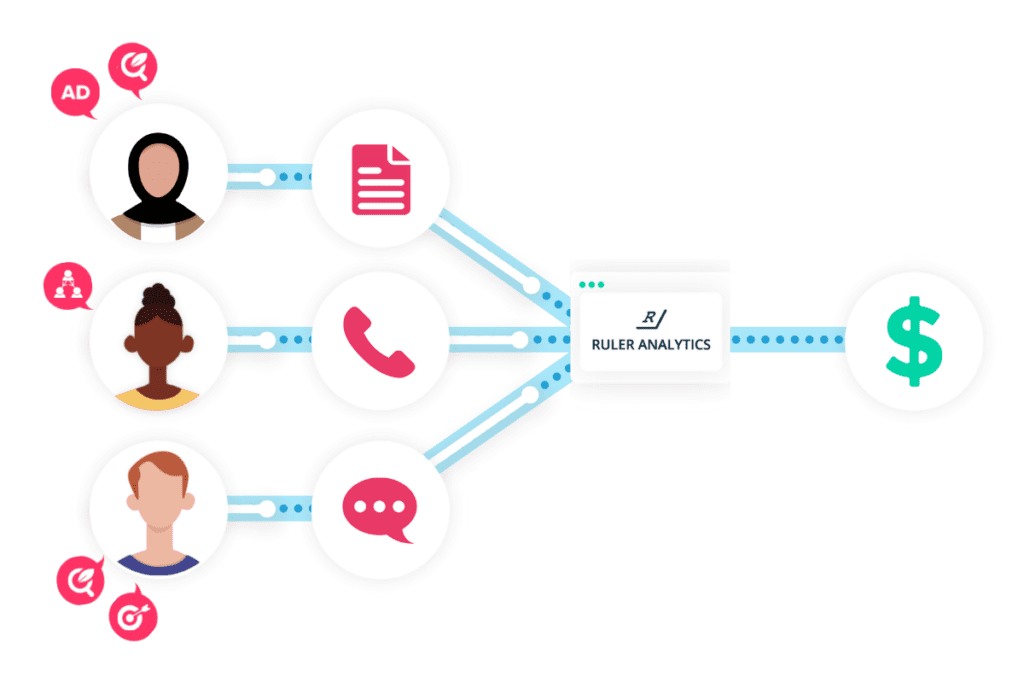End to end marketing gives marketers a full view on what is and isn’t working within their customer journeys.
31% of marketers struggle to prove their ROI. And that’s only those who are aware of the issues they face when it comes to effectively tracking their marketing impact.
Many marketers struggle with proving their ROI without even realising it.
Because they can’t link inbound leads to anonymous website sessions, they assume their return on investment is a less tangible metric than it could be in reality.
End to end marketing supports marketers to better understand full customer journeys and see what channels and content truly impact users to close into sales.
In this blog we’ll go through:
End to end marketing is a campaign strategy where marketers focus on viewing marketing touchpoints as one part of a whole.
It allows marketers to view full customer journeys as opposed to viewing a broad spectrum of users under one vague metric. For example, in Google Analytics, you likely track the success of your marketing content through sessions.
But this is a metric created to analyse data across many visitors.
End to end marketing allows you to break down your analytics into a visitor-level view.
Without end to end marketing, it’s impossible.
⚡️ Pro Tip
Prove marketing’s impact on the customer journey with Ruler’s Paths Report. It goes beyond basic analytics, revealing the intricate customer journeys that lead to sales. You can see exactly which channels influence website visits, pinpoint the time it takes prospects to convert and identify the optimal number of touchpoints for success.
With insights on attributed revenue, conversion times, touchpoints, and conversions by source, you can optimise your marketing mix and maximise your ROI.
End to end marketing covers multiple channels and campaigns.
To be successful online, you need to coordinate all of these moving parts to reach, engage and convert website visitors.
With the right tools in place, however, you can automatically understand the impact of your end to end marketing campaigns.
The first step to achieving proper tracking across end to end marketing is understanding the customer journey. The buyer’s journey generally follows three stages: awareness, consideration and decision.

Related: Complete guide to customer journey stages
As a marketer, it’s important to understand how those who go on to purchase from you, find your business.
If you have even just a few sales a month, it becomes really tricky to track every time those users interact with your website and understand where they originally came from.
Proper tracking allows you to prove your end to end marketing campaigns are working.
You can take the guesswork out of your reporting and use real-time data to monitor your performance and make data-driven decisions.
Related: Data-driven marketing
We know that generally users don’t land on your website and convert right away.
With end to end marketing and a proper lead generation funnel in place, you can’t be sure that new users to your site are being driven down the funnel.
Related: Guide to marketing touchpoints
Understanding the outcome and impact of that work is essential to learning what to do next. After all, business leaders in your company will want to know what marketing is achieving in terms of the one metric that matters: revenue.
While you might see a large number of clicks or huge reach across a particular campaign, what role is it playing as part of your customer’s journey?
Measuring your work in isolation, and assuming your work is having an impact is a big red flag.
There are a number of problems that marketers face when working without end to end marketing.
They can usually be rounded up as:
Unless you’re a Google Analytics whizz, chances are you won’t have maximised the options available to you to track actions on your website.
Related: Limitations of Google Analytics
And, even if you are a whizz, there are some actions you just can’t properly track.
We advise tracking:
💡 Pro Tip
Not sure how to track these conversions? Read our guides to form tracking, phone call tracking and live chat tracking to see how easy it can be!
Another issue for marketers is lead visibility. If you have tracking set up to count your form submissions and phone calls, that’s great to see how many leads you’re creating. However, you can’t see how high quality those leads are.
Related: How to track lead value
It means you’re left without key data. And due to the lack of tracking between your sales team and your analytics, you can’t connect your leads to your sales.
Related: Complete guide to lead tracking
Not only do long customer journeys mean lack of tracking as they last longer than the tracking timeframes of 90 days held by Google Analytics, but they’re complicated for another reason too.
Long customer journeys mean lots of touchpoints.
If a user interacts with your website 100 times, how can you even begin to understand which channels have worked well?
And surely, even if a user engages with a PPC advert in those 100 touchpoints, that means the ad had some success?
Related: How to view full customer journeys
Let’s use an example.
You set live a new campaign around a particular topic.
As part of your campaign, you get a budget of £2,000 to spend on paid campaigns. So, you spend £1,000 on a PPC campaign across Google, and the other £1,000 on paid social. You also run some organic content too.

In the weeks of your campaign, you see ten new newsletter signups, as well as five new demo requests. Great!
But you should be asking yourself:
Proper tracking can help you answer these questions.
It will allow you to make informed decisions about your future end to end marketing campaigns because you’ll know what works best.
We’ve hinted at it, but the problems you face when implementing end to end marketing can be resolved with the right tool; specifically a marketing attribution tool. And that’s where we come in.
🚀 Pro Tip
Not sure what attribution is or how it can support your business? It helped one of our clients increase their ROAS by 23%. Learn all you need to know about marketing attribution here.
Marketing attribution works to reduce the data discrepancies marketers have to face on a daily basis.
Ruler tracks every new and returning visitor to your website. Not only that, but it also tracks variables like their lead source, first-click landing page and more.
Related: Track where every lead comes from
That’s what makes it the perfect solution for those marketers struggling to evidence the impact of their end to end marketing campaigns.
Here’s how Ruler works.
A user visits your website for the first time. Ruler tracks all of their data including their first-click source.
Ruler continues to track and collate the data for this user on subsequent visits. When they convert into a lead, via call, form or live chat, Ruler fires all of the relevant marketing and lead details to your CRM.
But it doesn’t stop there. Ruler will continue to track your lead until they convert into revenue. At this point, Ruler will scrape the revenue from your CRM and fire it back to your marketing apps. There, it will automatically attribute it to the influencing marketing channels and campaigns.
Related: How Ruler attributes revenue to your marketing

With this in place, you can get a full overview of how your end to end marketing campaigns are working.
As you can track the full customer journey of your leads and visitors, you’ll be able to see how particular marketing messages are working to drive meaningful conversions.
Learn more about tracking customer journeys from end to end by downloading our eBook. You’ll learn how to link your closed revenue back to the marketing touchpoints that matter!
Or, if you’re ready to learn more, book a demo with our team. We’ll show you how you can start connecting the dots between sales and marketing.